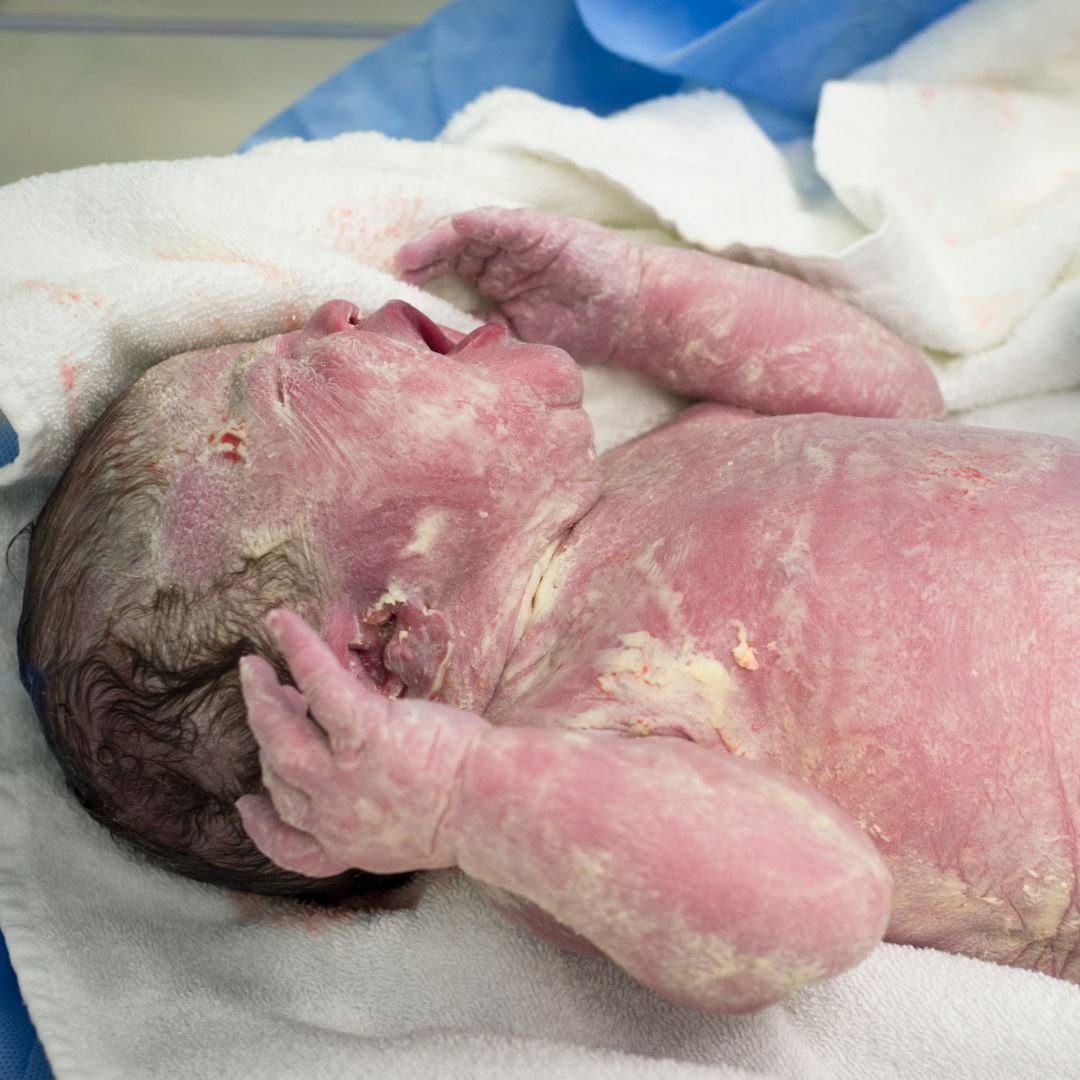What is Vernix?
Perfect Protection for Your Baby
Chances are if you have ever watched a birth video or seen pictures of newborn babies, you have noticed they often arrive earthside with a white, cheese-like substance on their skin. This is called vernix caseosa and it provides some serious protection for your baby!
Vernix is a thick, waxy type substance created only by humans and is primarily the result of a secretion of oil from your baby's sebaceous glands. It begins forming in the womb at approximately 20- 21 weeks gestation and will both cover and protect the fetal skin before and following birth. By the time your baby is full term, it will have absorbed some of its vernix into the skin, which is why some later term babies may have less vernix when born. It consists of approximately 81% water, 10% lipids, and 9% proteins. Of the 41 proteins found in vernix, 25 are so unique they can only be found in vernix!
WHY IS VERNIX SO AMAZING?
In utero, vernix helps protect and keep your baby's skin moisturized. It prevents both the loss of fluids and electrolytes. It also protects baby from unwanted pathogens because of its antimicrobial abilities. While still in the womb, some vernix will shed and be consumed by all babies. This helps develop their gut and will make up some of their first bowel movement, called meconium.
During labor and the pushing phase, vernix acts as a lubricant helping baby maneuver and pass through the birth canal more easily. It also helps baby collect good bacteria, aka your vaginal bacteria, which will go on to help build your baby's microbiome and their immune system.
After birth
Following birth vernix helps with temperature regulation and wards off infection because it contains antimicrobial peptides and proteins. It also contains that intoxicating "new baby smell" which assists with newborn + parental bonding. Most vernix will be absorbed by the skin within 24 hours, however its common for it not to be fully absorbed for days, especially if collected in baby's luscious folds and creases. Because vernix is so beneficial, more and more parents are including in their birth preferences (aka birth plan) that “vernix be rubbed into the skin and not be wiped off following birth.” Some may naturally stick to towels, etc. but leaving the rest on and delaying baby's first bath for at least 24 hours, if not days, will allow vernix to do its amazing protective work for your little one!
RESOURCES




